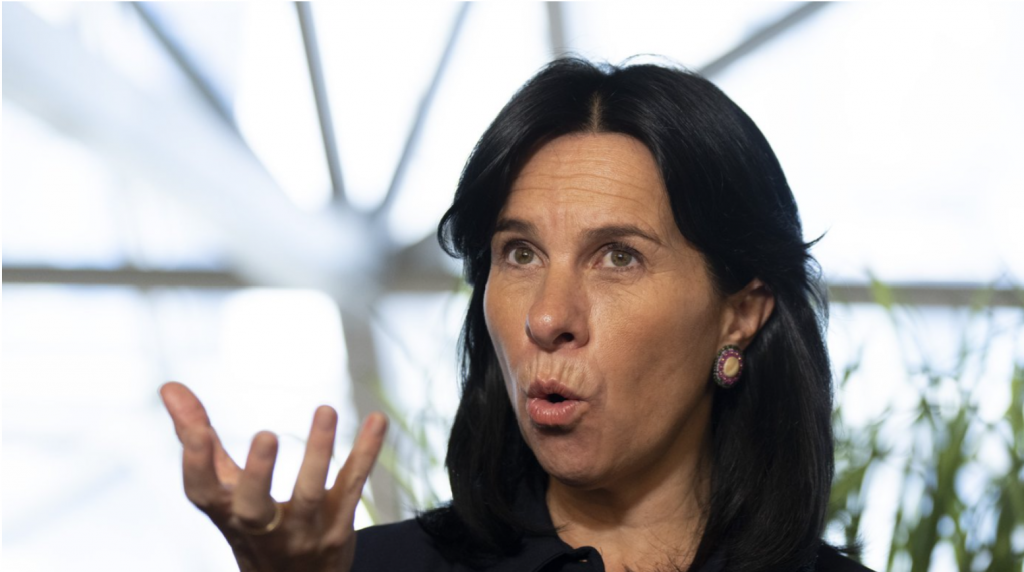The MSTODM Blog
This blog features articles and insights regarding homelessness in Montréal and around the world. The goal of these articles is to bring greater visibility to the issue of homelessness, to understand the structural causes responsible for it, and to highlight innovative, community-based initiatives aimed at solving it. If you’re a volunteer for The Open Door, a McGill student, or simply a member of the local community, we invite you to learn more about homelessness here and to discover new ways to help!
Motion Denied: Why Montreal’s Emergency Declaration on Homelessness Mattered
On November 16th, a pair of Montreal city councilors motioned for declaring a state of emergency over the city’s homelessness situation – a motion that ultimately failed.
The Increasing Scale of Homelessness in Montreal
The homelessness crisis in Montreal has reached unprecedented levels in 2024, with visible signs of the emergency appearing across the city. The statistics tell the story: Quebec’s unhoused population has more than doubled between 2018 and 2022, reaching approximately 10,000 people—a number that likely underrepresents the true scale of the crisis. While the Island of Montreal still hosts the largest concentration of unhoused individuals (47% of Quebec’s total unhoused population), the crisis has spilled over into many Montreal neighborhoods, with Laval and the South Shore, combined, reaching 1006 people in 2022.
Perhaps most alarming is the rapid growth in the number of encampments throughout the city. According to a CBC News survey, over 300 encampments were documented between January and November 2024 in the downtown borough of Ville-Marie alone. Many of these settlements are quickly dismantled by local authorities, leaving their residents with nowhere to stay as shelters rapidly fill up.
As we move further into the winter, the situation has become even more dire. Local shelters operating at maximum capacity have now turned to offering chairs for overnight stays as a measure of last resort, with facilities like CAP St-Barnabé having to turn away between 800 and 900 people in November alone. This shortage of emergency shelter space emphasizes the immediate and life-threatening nature of the crisis, especially as the weather gets colder.
The Failed Push for Emergency Measures
In response to these worsening conditions, city councillors Craig Sauvé and Serge Sasseville presented a motion on November 16th to declare a state of emergency on homelessness in Montreal—similar to measures taken during the COVID-19 pandemic. The motion was ultimately defeated in a 32-26 vote on November 18th. The proposed emergency declaration would have granted the council expanded powers to address the crisis, including:
- The ability to requisition privately owned accommodations for emergency shelter space
- Allocating additional resources and funding to existing shelter

While Mayor Valérie Plante dismissed the motion as merely symbolic, advocates such as Sauvé argue that such a declaration could have raised critical public attention to the homelessness situation, and put pressure on the provincial government to properly allocate existing resources toward taking much-needed, concrete action. Other Canadian cities, including Toronto, have taken similar emergency measures in the past few years to address their own homelessness crises.
Government Response and Path Forward
Despite the failed motion, in early December, the Quebec government secured a one-time federal funding agreement of $50 million over two years, with approximately half of it going to Montreal. This funding will support the Community Encampment Response Plan (CERP), enabling the expansion of shelter spaces and 24/7 services, while promoting housing stability for those at risk of unsheltered homelessness.
Additionally, Mayor Plante has confirmed plans to construct 60 modular housing units for the unhoused by March 2025 in two Montreal locations—a modest but concrete step toward addressing the crisis. However, with 17,000 people currently on the waitlist for social housing, these measures highlight the vast gap between current government solutions and the scale of the situation. As such, as we continue to witness growing rates of homelessness in Montreal and their harsh reality, it becomes increasingly clear that addressing this situation requires not just one-time emergency responses, but long-term solutions that tackle the underlying structural issues driving homelessness in the city. Ultimately, these recent developments—from the failed motion to the new funding agreements—represent important steps in the dialogue about how best to support our city’s vulnerable residents.
Uncovering the Foundations of Homelessness: Canada’s Housing Crisis

Years after Canada’s resilient recovery from the 2008 economic recession, the nation is still ensnared in a dire crisis––a seemingly unending housing shortage. Alongside soaring housing prices, this shortage has led to an unprecedented rise in homelessness across the country.
A recent report commissioned by the Ministry of Health and Social Services reveals that homelessness in Quebec has almost doubled (44% increase) since 2018. Montréal, which already contained 80% of the province’s total homeless population in 2018, has experienced a 33% increase. In Toronto, rates of homelessness are even higher, and the issue has become increasingly visible in the aftermath of the COVID-19 pandemic. The city’s shelter system is currently supporting about 10,700 individuals, and there are many more experiencing forms of “hidden homelessness” that are typically unaccounted for in official statistics.
There are a variety of interrelated and interacting factors that cause homelessness, including:
- Low wages, unemployment, and poverty
- Lack of access to affordable healthcare
- Systemic failures (failed transitions from child welfare, hospitals, refugee centers, correctional or mental health facilities, etc.)
- Discrimination and racial inequality
- Opioid crisis
Recent surges in homelessness, however, are most likely attributed to the lingering effects of the COVID-19 pandemic and the intensifying housing crisis in Canada. These two highly visible events––specifically the current housing crisis––only mirror the underlying structural failures that have existed for years.
What are some of the main factors behind the housing crisis?
Many believe the crisis is rooted in policy changes over the past several decades, beginning with the federal government’s withdrawal from social housing provision in the ’90s. The prolonged period of low mortgage and interest rates that followed also contributed heavily to the shortage. By making borrowing more affordable, these rates made homeownership more accessible to Canadians; however, combined with the relentless rise in population, this greater accessibility has fostered a demand for housing that consistently outpaces the supply. Moreover, increased demand has exerted upward pressure on housing prices, transforming once-affordable properties into financially burdensome investments.
Several other factors have exacerbated this crisis, including foreign buyers. Despite the government’s recent efforts to restrict foreign buyers from purchasing Canadian real estate, individuals who had previously invested remain unaffected by the ban. Thus, their properties stand vacant and unused, instead of providing much-needed accommodation for unhoused Canadians. Property speculation occurs at the domestic level as well––many Canadian investors buy up real estate for the sole purpose of making profits, using houses as financial assets rather than residential spaces. Another prominent issue is the oversupply of short-term housing rentals (akin to the Airbnb model), which has reduced the availability of long-term rental options and actual opportunities for home ownership. All of these factors constitute the increasing “financialization” of housing in Canada, in which housing is treated as a commodity rather than a basic human right.
What now?
As illustrated by these various explanations, the affordable housing crisis is deeply intertwined with long-standing structural challenges, all of which defy quick-fix solutions. The impacts of the COVID-19 pandemic have made the dream of stable housing even more elusive for many Canadians, intensifying the need for a systemic response against the rampant financialization of the housing sector. Ultimately, it is the responsibility of federal and provincial governments to provide such a response, addressing the crisis with comprehensive, long-term strategies that go beyond singular policy interventions.
Reframing Homelessness: Debating the Power of Changing Terminology

Over the past few decades, activists and scholars have been encouraging a shift away from the term “homeless” to describe populations without safe, stable, and permanent housing. Why is the language changing, and how important is this change?
While “homelessness” is still commonly used to describe the general social phenomenon, many people avoid referring to individuals as “the homeless.” There are many reasons for this shift, but it is mainly a reaction to the inaccuracies and negative stigma attached to the term. Over the years, the term has garnered negative connotations that frame homelessness as a public nuisance. Much of this stigma can be traced back to powerful actors like the media and politicians, who depict homelessness as a sign of social decay and dehumanize subjects through the rhetoric of “cleaning up the streets.” The impact of such language is serious: by perpetuating harmful narratives about unhoused individuals as “lazy,” “dangerous,” or “criminal,” it molds a public response to homelessness that is marked more by apathy than empathy.
It is safe to conclude, then, that language carries immense power––simple changes in wording can transform the entire trajectory of a narrative, as well as illustrate the boundaries between inclusion and exclusion in our communities. For this reason, exploring alternative terms is a meaningful practice in destigmatizing and refocusing the issue of homelessness in public discourse. It is also critical to remember that some of the individuals we speak about may have a preference regarding how outsiders define them, and in such cases, we must listen to and respect their choice of terminology. Our intention is not to speak on behalf of people experiencing homelessness; we simply aim to educate the public on how to be open-minded and respectful when interacting with local communities.
What alternative terms can we use, and what do they mean?
Homeless Person
While it is an extremely minor change, replacing “the homeless” with “homeless person or individual” centers the focus onto the human experiencing the crisis. This can counter the dehumanizing impact of media depictions, faceless statistics, and general policies that lump everyone together under “the homeless.” It also encourages people to think about how homelessness is different for every individual, resulting in more context-specific solutions.
Some advocates believe this doesn’t go far enough, since the word “homeless” itself is attached to negative perceptions. However, many individuals experiencing homelessness accept this label.
Unhoused/Houseless/Underhoused
These terms address the fact that a home does not need to be a permanent physical shelter: to be home is to be in an environment that provides warmth, familiarity, and comfort to an individual. This can come in the form of a personal community, a city, or a well-known spot. The terms houseless and unhoused specify that while these individuals do not have a physical house, they can still have a home.
They also link the issue to a direct cause––a lack of access to safe and affordable housing. This challenges the common misconception that homelessness is the result of ill-informed personal choices and reveals it as a structural and political failure.
Individuals Experiencing Homelessness
This is one of the most common alternatives to “the homeless.” It specifies homelessness as a temporary condition rather than a life-defining situation.
Some people believe it is better than unhoused/houseless because it acknowledges those experiencing “hidden homelessness,” who are temporarily sheltered (e.g., rooming with friends/family, staying in motels, living in their car, etc.) but have no long-term housing security.
Does changing the language really matter?
As these alternative terms demonstrate, changing the language is not simply an attempt to sugarcoat the issue and make people feel better about the condition: different terms are more applicable in given situations, and each term has the potential to challenge popular misconceptions about homelessness. Still, many feel that changing the terminology is arbitrary and argue that these terms will inevitably go out of style. They evoke the concept of the “euphemism treadmill,” which states that a term originally meant to be the neutral and less offensive option gains negative baggage and ultimately becomes offensive.
What is the solution?
Taking this view into consideration, it is clear that the debates around language use are incredibly complex. Is there a point to using new terms to describe homelessness, other than making the issue seem more palatable? Or can changing the terminology actually influence public opinion toward greater empathy, leading to better solutions? Ultimately, you won’t be shamed for using one term over another (as long as you weren’t specifically requested to use an alternative term by a member of the community). It is far more important that you show kindness, respect, and openness when interacting with anyone experiencing homelessness. Additionally, if you have the means, consider supporting your local organizations committed to this cause––together we can make a difference!